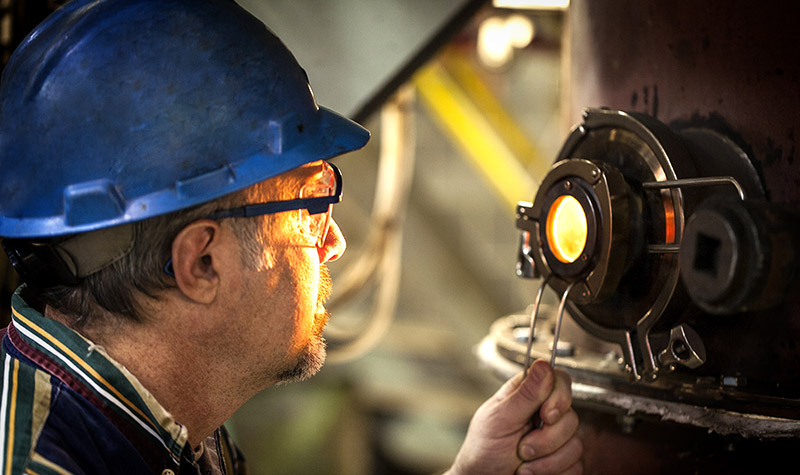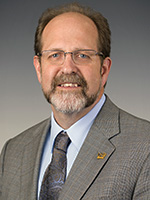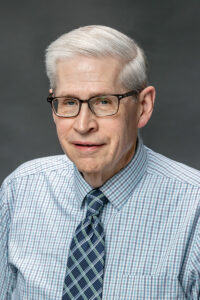Fueling the future
Mere months after North Dakota allocated funds to set it up, UND’s State Energy Research Center already demonstrating value

Less than a year after the State Energy Research Center (SERC) came into being, program director Tom Erickson believes it’s on track to accomplish what the North Dakota Legislature intended when it created the Center.
“On many fronts, it’s exceeded my expectations in terms of the number of new creative ideas we have brought forward that we’re considering for funding,” he said. “It’s really exciting to see the number of new concepts and new ideas that we’re considering for patents and various forms of intellectual property protection.”
In 2019, the Legislature approved a bill to establish SERC at the UND Energy & Environmental Research Center (EERC). The bill set aside $5 million to fund research this biennium in emerging topics critical to North Dakota’s energy industry and environment. Erickson, the former EERC CEO, was named director of the program.
Already, SERC has received 56 ideas for proposals from EERC researchers, funded 21 of them, completed work on three projects and is advancing all three completed projects toward additional funding. In the past month, Erickson has seen five new-invention disclosures, all based on or related to SERC projects.
Disclosing new inventions

“When we presented this to the legislature, we showed them the downturn in new-invention disclosures, which had fallen to zero in fiscal year 2018,” Erickson said. “These new disclosures are exactly what we were hoping for and what we were expecting. It sets us up for the future at EERC, but more importantly, provides opportunities for the future of the state of North Dakota.”
Two promising research areas that Erickson said have significant potential for North Dakota are the extraction of rare earth elements from coal, coal ash and shale formations in the state, and the creation of graphene from low-rank lignite coal, an abundant natural resource.
Erickson said graphene is a unique, extremely strong material in which carbon atoms are arranged in a flat plane. Currently, it’s difficult to produce and used for high-value applications, such as hockey sticks and racket ball rackets.
“There are reasons why North Dakota lignite and the chemistry of a lignite coal provides some advantages to producing graphene,” Erickson explained. “We think these give us a leg up, and we see it as a great future opportunity, even though we’re in the very early stages.”
In addition to funding exploratory research, SERC provides access to EERC expertise through projects designated by the North Dakota Industrial Commission and an education and outreach component.

“We launched a program in April on assessing North Dakota’s energy future,” Erickson said. “It’s focused on looking at the sustainability and growth of energy in North Dakota and how that affects revenues to local, state and tribal venues, how it affects the health of our environment, access to affordable energy and the jobs of our citizens.”
SERC education and outreach
There are two programs under SERC education and outreach on which Erickson said will soon be underway. Energy Hawks, started at EERC three years ago, gives graduate and undergraduate students from a wide range of disciplines the opportunity to gain firsthand experience in North Dakota’s energy industry. This summer, nine UND students, one NDSU student and one Bismarck State College student will participate remotely because of the COVID-19 pandemic.
Erickson expects a new project called e-Portal to launch within a few months.
“It brings together information and resources on North Dakota energy – such as documentaries, fact sheets and videos – for public and educational use,” he said. “We’ll be working with institutions throughout the state to provide a single-source location. We have nine institutions that have agreed to participate.”
Three initial SERC projects have been completed and are using the information gained in support of North Dakota initiatives to attract additional funding. These projects are:
- Understanding the effects of natural and manmade electromagnetic pulses on the electric grid
- Assessing energy storage technologies for North Dakota
- Opportunities for rare earth element production from select North Dakota shales
Other recently approved SERC projects:
- Corn oil extraction efficiency optimization – Jasmine Oleksik, research engineer
- Subsurface pressure management: Managing the Inyan Kara Formation while drilling – Lonny Jacobson, principal operations specialist and oilfield operations team lead
- North Dakota wind turbine blade recycling – Josh Strege, principal process engineer
- Developing value in North Dakota’s produced geologic brines – Chris Martin, principal engineer
- Evaluating shared border analysis for classifying unconventional reservoirs in North Dakota – Blaise Mibeck, materials scientist
- Rare-earth elements and graphene precursors from North Dakota Lignite prepared using ionic liquids – Mark Musich, research engineer
- Electrochemical pathways for enhanced ethanol synthesis at near-zero emission – Jivan Thakare, senior research engineer
- Exploration of opportunities and challenges for a North Dakota petrochemical industry – Lu Jin, principal geoscientist
- Enhancing stimulated reservoir volume through a new refracturing approach – Agustinus Zandy, research specialist
- Toward a real-time detection of buried pipelines and spills in North Dakota — Cesar Barajas-Olalde, senior geophysicist
- Host capacity analysis for improved planning and preparations of North Dakota distribution networks – Daisy Selvaraj, research engineer



